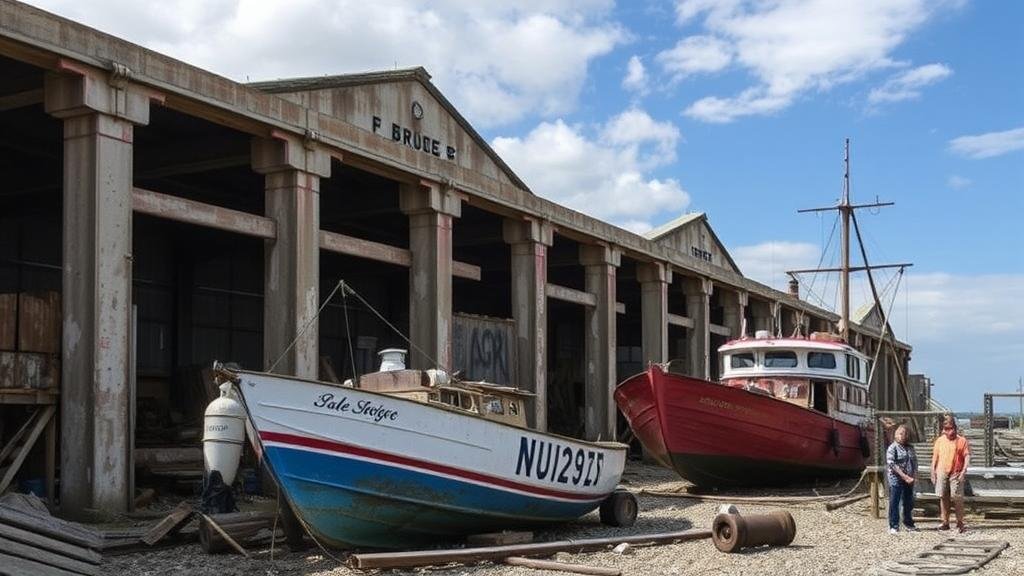Exploring Abandoned Coastal Warehouses for Maritime Trade Artifacts
Exploring Abandoned Coastal Warehouses for Maritime Trade Artifacts
Abandoned coastal warehouses provide unique opportunities for the exploration and recovery of maritime trade artifacts. These structures, often remnants of a bygone era, are critical not only for understanding historical trade practices but also for encapsulating the evolution of coastal economies. This article will delve into the significance of maritime trade artifacts, the methodology of exploration, notable case studies, and the implications of preserving these coastal remnants.
Historical Context of Coastal Warehouses
Coastal warehouses emerged as essential components of maritime trade in the 18th and 19th centuries. r primary function was to store goods that arrived via ship before distribution to inland markets. These warehouses were often strategically located near vital trade routes, allowing for efficient loading and unloading of goods. For example, the port city of Baltimore, Maryland, established warehouses as early as 1706, facilitating trade with European markets and the Caribbean.
The decline of these warehouses often correlates with changes in trade patterns, technological advancements in shipping, and the rise of containerization in the late 20th century. Today, many of these once-bustling structures stand abandoned, echoing the maritime history of the regions they occupy.
Significance of Maritime Trade Artifacts
Maritime trade artifacts, which include tools, storage containers, and other equipment found within these warehouses, offer tangible evidence of historical trade practices. These items help researchers and historians understand the types of goods exchanged, the technological capabilities of the time, and the cultural interactions facilitated by trade.
The recovery of artifacts such as wooden crates, navigational tools, and cargo manifests can provide insights into shipping routes and volume. According to a 2022 study conducted by the Institute of Maritime History, nearly 60% of maritime artifacts recovered in the past decade have shed light on previously unknown trade networks.
Methodology for Exploration
Exploring abandoned coastal warehouses involves a systematic approach, including historical research, site surveys, and archaeological excavation. Below are key steps in the methodology:
- Historical Research: Detailed investigation into historical shipping records, warehouse construction dates, and trade documentation complements on-site exploration.
- Site Survey: Physical inspection of the warehouses to identify potential areas for excavation and recovery of artifacts.
- Excavation: Archaeological techniques are applied to excavate the site methodically, ensuring the preservation of context for each artifact.
- Documentation: All findings must be meticulously documented, including photographs, sketches, and written descriptions for future research.
Notable Case Studies
One prominent example involves the exploration of the abandoned warehouses in the port of Cape May, New Jersey. In 2019, archaeologists uncovered artifacts dating back to the 1800s, including importing goods from Europe, which linked this small port to international trade networks. The project was lauded for integrating volunteers from the community, fostering an appreciation for local history.
Another case study is the recovery of artifacts from the old shipping warehouse in San Francisco’s Embarcadero district, known for its role during the Gold Rush. Here, excavations led to the discovery of shipping crates and personal effects of sailors from the 1850s, providing a rich narrative of the maritime economy during this transformative period.
Implications for Preservation
Preserving abandoned warehouses and their artifacts is crucial for cultural heritage. These locations serve as educational tools and can enhance local tourism. The National Trust for Historic Preservation estimates that heritage tourism can generate more than $34 billion annually in the United States alone.
Also, systematic exploration can generate data that inform conservation efforts. With the increasing impact of climate change and urban expansion, prioritizing the preservation of these crucial historical sites is vital for future generations.
Conclusion
The exploration of abandoned coastal warehouses for maritime trade artifacts not only enriches our understanding of historical trade practices but also fosters community engagement and local economic development. As these sites continue to face risks from urbanization and environmental factors, proactive measures for their conservation and study are critical. By bridging the gap between past and present, such explorations can offer valuable lessons for contemporary maritime trade and cultural preservation.



